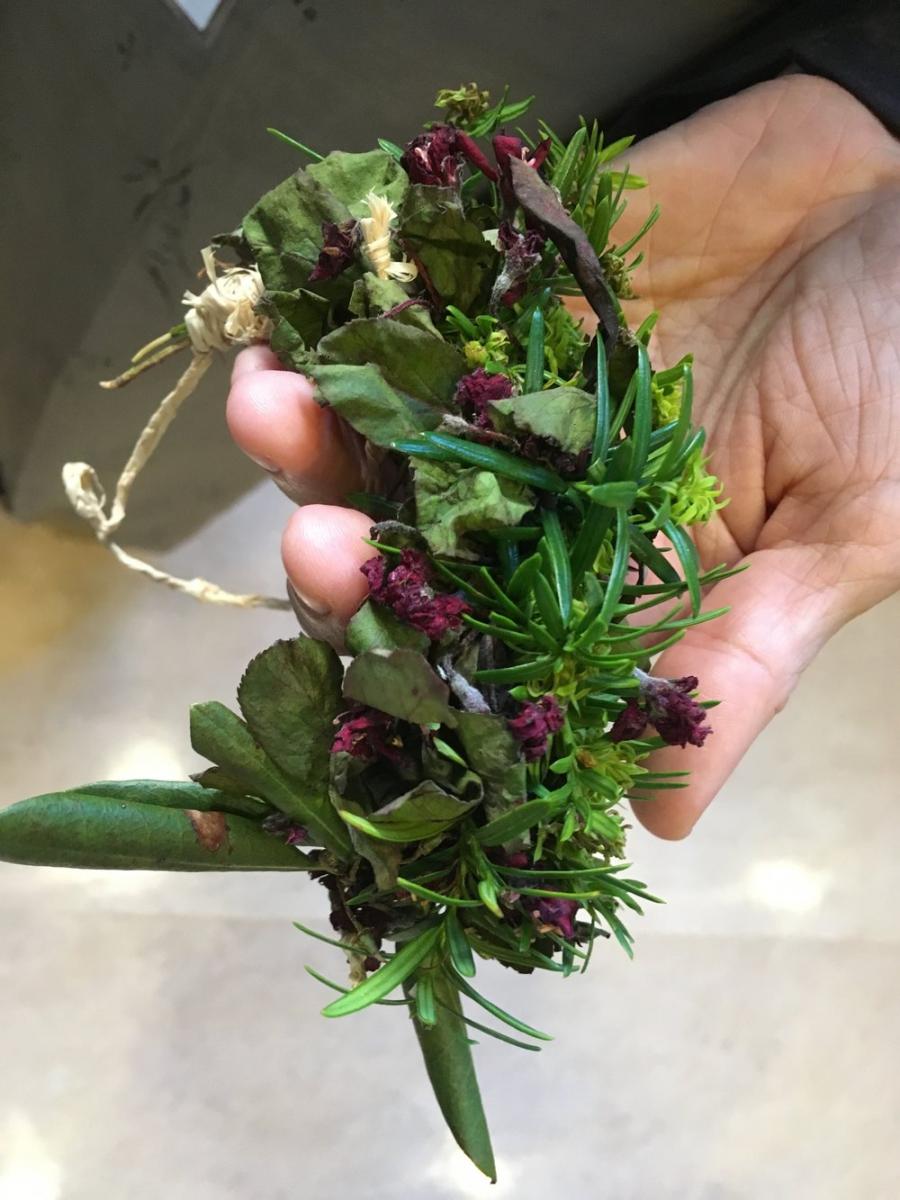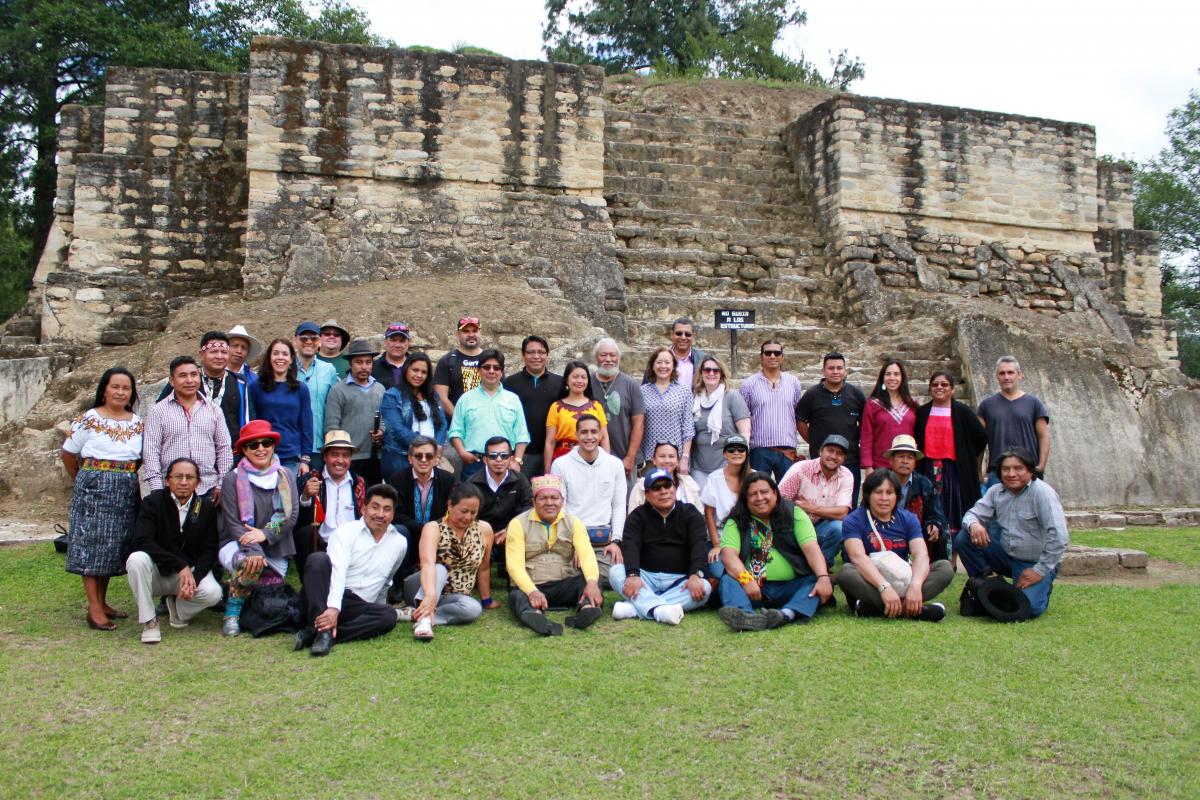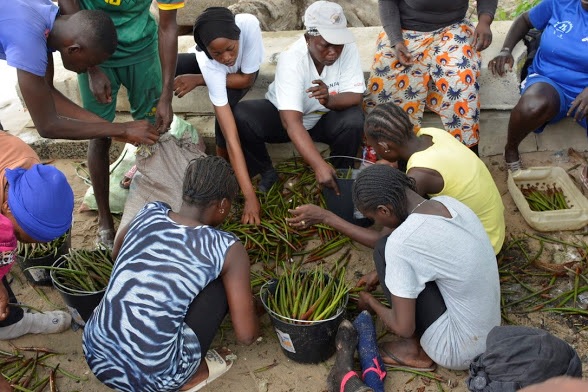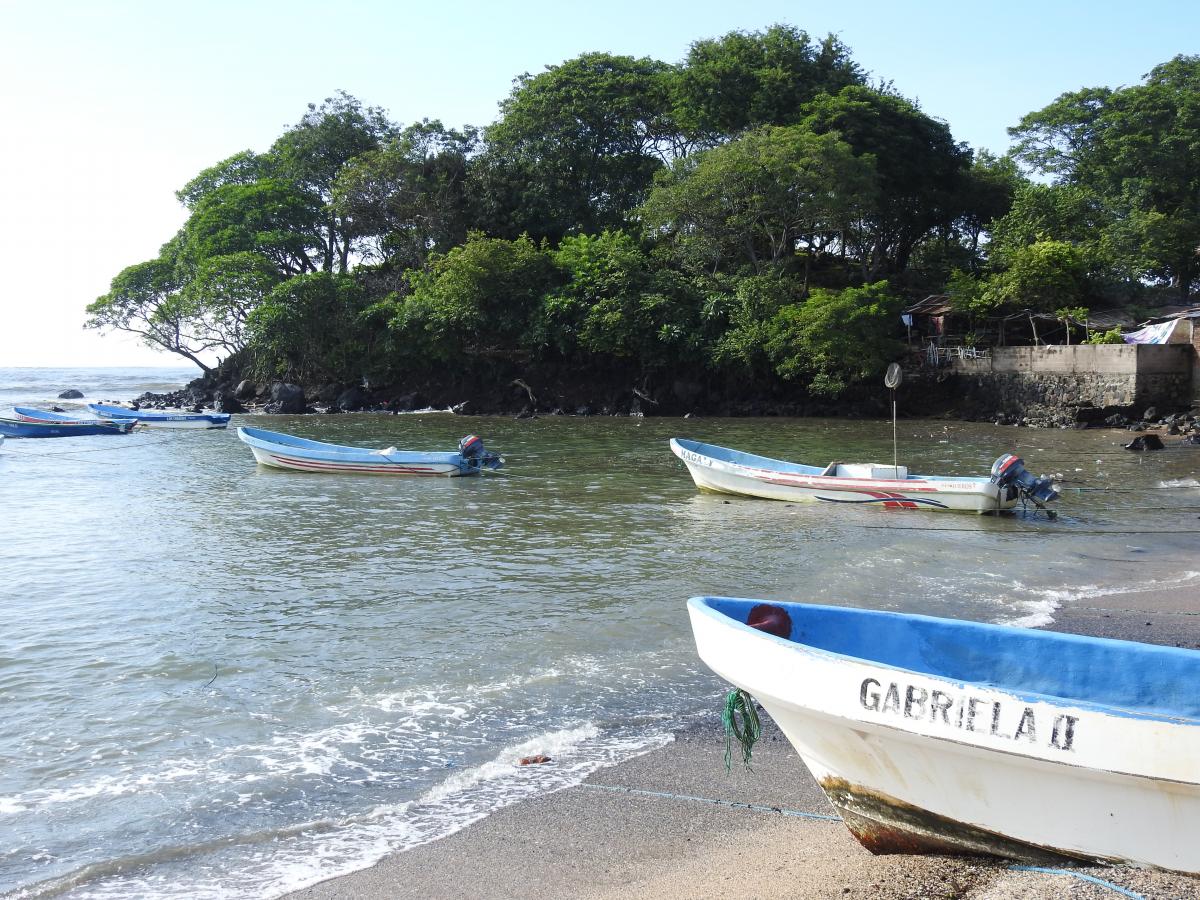Blog: Artistic representation meets academic research: Reflections from a journey to Nova Scotia
CEESP News - Dr. Helen Schneider, Flora and Fauna International
I’ve always found something slightly unsettling about visiting a place with a long history of human habitation but only a relatively recent built heritage. Somehow it feels to me that the buildings and other infrastructure sit uneasily on the landscape like they don’t quite belong.
So, it was with mixed feelings that I landed in Halifax, Nova Scotia on a sunny but chilly day in late May. The reason for the visit? To participate in a conference co-hosted by the Community Conservation Research Network (CCRN) and IUCN’s Commission on Environmental, Economic and Social Policy (CEESP).

Photo: © Laurel Chun
A kupe'e (wristlet) woven by a member of the Hawaii contingent. Photo: Laurel Chun
This event was billed as a “unique opportunity to shine a spotlight on local communities around the world, how they are engaging in environmental conservation supporting sustainable livelihoods, and how they can best be supported”. Certainly the international
 Photo: Helen Schneider
Photo: Helen Schneider
The diversity of participants was matched by that of the topics covered with a good balance between terrestrial and marine/coastal examples, and engagement with the range of complex issues to be found at the interface between people and the environment. It was refreshing to see that in many sessions the emphasis was on local communities and their relationship with nature, indeed their position as being part of nature, rather an all too common framing of people solely as a conservation threat.
Several times I was reminded of the World Parks Congress held in Sydney in 2014 which, like this conference, started with a welcome from representatives of the indigenous people of the area. Along with representatives from other communities, they played an active role in the event, weaving stories, art, song, music and dance through the agenda. While we often talk about their rights to use and manage their territories, as with the Aboriginal representatives in Sydney, I was struck again by indigenous people representatives framing these issues as ‘taking back responsibility to care’ for the land (and sea).
With so many parallel sessions it was impossible to participate in more than a fraction of what was on offer or to fully and accurately represent the whole range of presentations and discussions.
The images and voices that stick in my mind are those of female participants. Among others, these include: Shaelene Kamakaʻala from Hawai’i describing how strong cultural links with kin and with nature support her through the challenges of being a young, indigenous woman within a state government agency; Humayra Secelia Muswar’s engaging presentations of her research with coffee farmers and fishers in Indonesia; and Bear River First Nation’s Shalan Joudry’s closing spoken word performance that brilliantly captured the essence of the event far better than I ever could.
To read some of the inspiring stories from the conference yourself, please visit the Community Stories page of the conference website, here.
Dr Helen Schneider is the Senior Technical Adviser for Conservation, Livelihoods & Governance at Fauna & Flora International.



